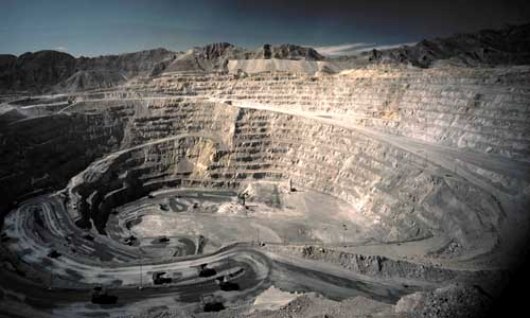Esta entrada también está disponible en: Spanish
Argentina March 2, 2012 – US Export-Import Bank (Exim) and Export Development Canada (EDC), two of the world’s largest publicly funded development finance institutions, will not be contributing to the highly controversial Pascua Lama gold mining project straddling the border between Argentina and Chile. The project has already and will further destroy glaciers to get at gold mineral deposits if it gets underway, affecting the water supply for indigenous communities and small agriculture in Chile as well as an internationally protected biosphere reserve in Argentina.
Exim Bank which lists Category A projects under consideration notes the Pascua Lama project as “Withdrawn”.[1] A spokesperson from Exim bank indicated that Barrick has simply decided to take its business elsewhere. EDC never published the project because Pascua Lama never made it past preliminary due diligence review.[2] EDC has also confirmed that Barrick has decided to seek financing elsewhere.
Pascua Lama has drawn strong opposition from thousands of local residents, NGOs, environmental activists, indigenous groups and even government agencies which have spoken strongly against the project. Both Exim and EDC’s due diligence reviews were bogged down with long lines of stakeholders wanting to express their concerns and offer information to the banks regarding the present and expected social and environmental impacts to be felt by the mega gold mine, the first bi-national mining venture of its kind.
In November of 2011, the Center for Human Rights and Environment (CEDHA) filed an Equator Principles Due Diligence Review of Pascua Lama to Exim and to EDC, laying out in 45 pages of detail, the clear violations to the Equator Principles of the Pascua Lama Project should either bank move forward with financing. The report centered on glacier impacts, indigenous community impacts, mountain highland impacts, and several other social and environmental dimensions which would be irreversibly affected by the Pascua Lama project. CEDHA as well as several co-sponsors to the complaint (including the International Accountability Project, Banktrack, FuCI and Inti Chuteh, called on the banks to reject Barrick’s request for financing the controversial bi-national gold mine. It is estimated that eventual loans to Barrick could have been in the order of hundreds of millions of dollars.
Other groups organized across the Andes, particularly inChile, but streaming up to North America, and around the world, sending letters and requests to both EDC and Exim to drop Barrick from any financing consideration. Argentina’s National Park Services also expressed concerns over Barrick’s impacts to local water streams that could affect the internationally protected San Guillermo Biosphere Reserve. The project is also in conflict, argues CEDHA, withArgentina’s recently enacted Glacier Protection Law. Barrick has attacked the law in federal courts, seeking an injunction to suspend the law in the Argentine province of San Juan, where Pascua Lama is set to implement.
Among the evidence presented to the banks was Barrick’s original hard-to-believe Glacier Management Plan, which essentially proposed to dynamite glaciers that were in the way of the gold reserves and haul the ice off in dump trucks to avoid, as Barrick put it incredulously, environmental hazards that might occur due to collapsing ice at the mine site!
Barrick probably thought, that the rapidly mounting opposition to eventual EDC and Exim bank loans, would lead to a rejection by the banks. Both EDC and Exim have to respect global social and environmental standards they adhere to under the Equator Principles. Barrick’s request was already delayed for over a year, as the due diligence processes dragged on addressing local social and environmental concerns. An EDC or Exim bank rejection of Barrick’s loan application would have driven up financial costs for Barrick and they’d have to turn to other private banks, under more risky investment circumstances. Barrick’s decision to withdraw their financing request to EDC and Exim bank is likely to be due to Barrick deciding to cut losses short before the risks of further conflict further raises financial costs.
[1] http://www.exim.gov/products/policies/environment/envproj.cfm
[2] http://www.edc.ca/EN/About-Us/Disclosure/Reporting-on-Transactions/Pages/category-a-projects.aspx. An earlier version of this press release incorrectly stated that EDC had removed the project listing from its website.
For more information:
Jorge Daniel Taillant
+54 9 351 507 8376
[1] http://www.exim.gov/products/policies/environment/envproj.cfm
[2] http://www.edc.ca/EN/About-Us/Disclosure/Reporting-on-Transactions/Pages/category-a-projects.aspx

